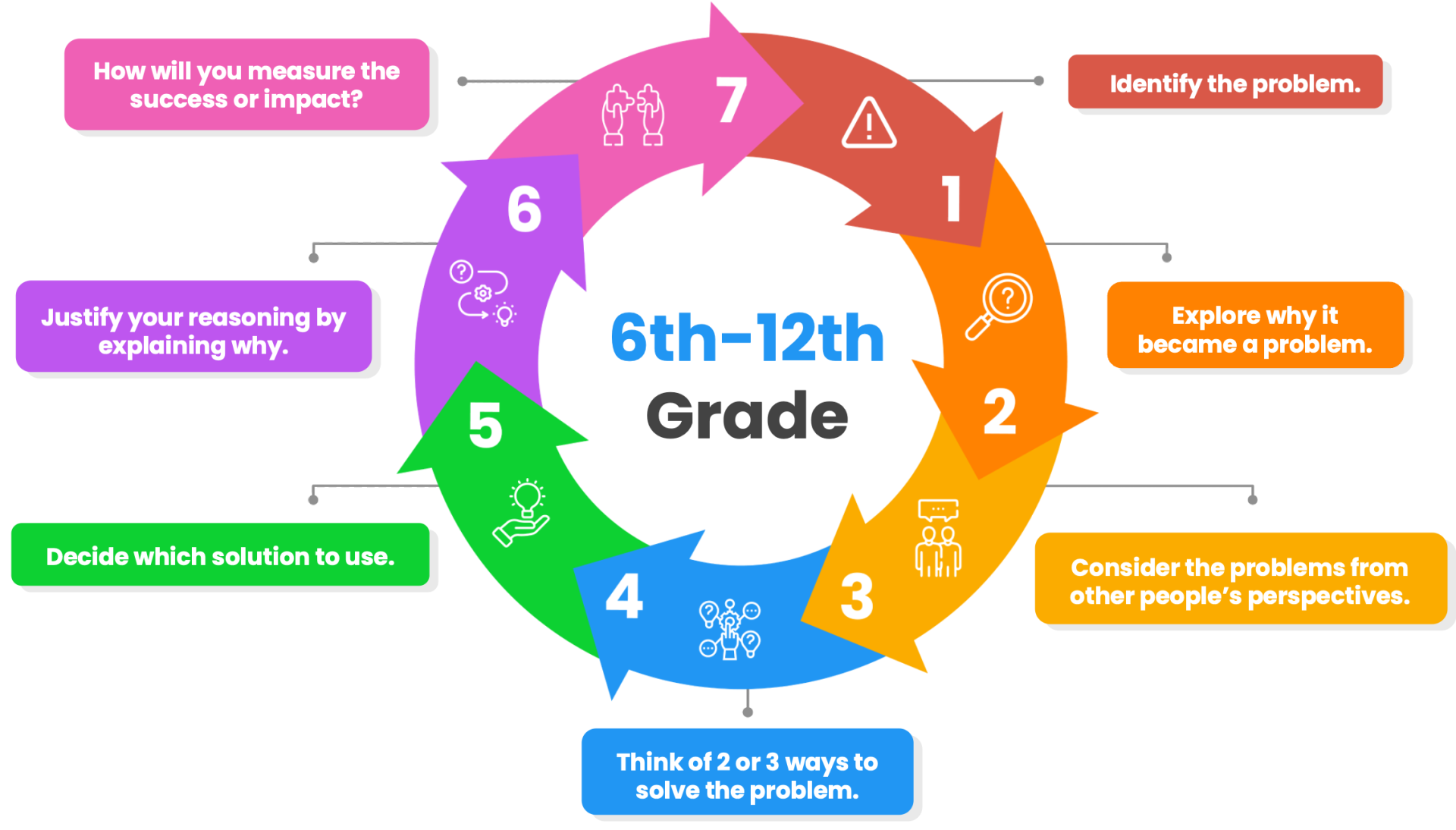Activity:
Social Media Concerns [6-12]
Summary
{ENTER SUMMARY TEXT HERE Lorem ipsum dolor sit amet, consectetur adipiscing elit. Donec ac magna ipsum. Phasellus venenatis volutpat pharetra. Aliquam vulputate ex sed nibh auctor, et placerat nisl placerat. Fusce porta molestie arcu, eget iaculis urna malesuada vel. Integer consectetur lectus tortor, et ultricies leo suscipit non. Suspendisse potenti. Integer gravida facilisis dolor in placerat.}
.
Connections between
STEM Concepts,
Learning
Targets and Standards
Learning Objective
- Students will identify and apply problem-solving techniques to solve problems.
- Students will understand how these skills relate to their confidence and success
Success Criteria
- Students will be able to explain the steps involved in problem-solving.
- Students can identify and use the appropriate problem-solving technique.
- Students can apply problem-solving techniques to arrive at a solution
Activity Introduction
Prompts for group activities
Step 1: Watch the video
The Problem with Parents, Kids, and Social Media
Activity Tip 1:
After the video, divide students into groups of 3 or 4 and let the
students begin their discussions while you circulate; it’s all about what THEY
think and feel. Ask them to listen carefully to their friends as they might
have different opinions to them.
Activity Tip 2:
Structure the discussions encourage the students to use the problem
solving circle and the simple sentence starters for effective conversation
structure.
Step 2:
Group Session
Tip 1: Start the discussion
After the video, divide students into groups of 3 or 4 and let the students begin their discussions while you circulate; it’s all about what THEY think and feel. Ask them to listen carefully to their friends as they might have different opinions to them.
Tip 2: Encourage the discussion
Structure the discussions encourage the students to use the problem
solving circle and the simple sentence starters for effective conversation
structure.
Step 3:
Assessment
The power of Brain-Bursts
Brain-Burst activities like these help students to build skills and become more confident.
Tip 1: Ask the students
- Ask the students who they believe the best listeners and best team players are from this activity?
- Ask them to justify their answers in a simple sentence.
- Explain to them that the idea is everyone improves both their listening and team work skills over time.
- Ask the students to summarise the video in 6- 8 words only.
Tip 2: Share ideas
Allow the students time to share their ideas. As they share, encourage other groups to ask them for their reasoning or how they landed on that solution.
Tip 3: Incentivize
Use your classroom incentive process to ensure all students work as a team i.e., points are earned as a class during these activities for collective rewards.



